This feature is currently available as a Limited Edition 2-disc 4K Ultra HD and Blu-ray set (a 2-disc Blu-ray only version is also available).
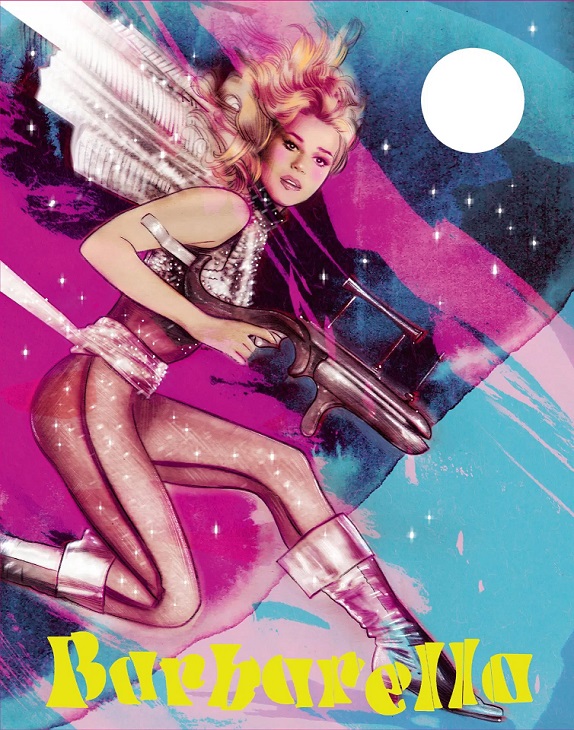
Back in 1968, attitudes in the world were changing. The hippie movement and youth culture were in full swing. In 1969, the release and smash success of Easy Rider changed cinema, but there were trippy and surreal efforts that arrived previous to the breakout hit. One of those titles was the unique Paramount effort Barbarella. Based on the French comic book of the same name, this lavish (in its day) effort from Italian producer Dino De Laurentiis and French director Roger Vadim (And God Created Woman) attempted to lure audiences into theaters with a sexy science-fiction epic. However, critics and audiences did not respond to the finished product and it flopped.
In the ensuing years, the movie has gained a cult following and now Arrow Video are delivering a lavish Limited Edition. With its widescreen photography, wild visual design and psychedelic color bursts, this is the type of feature that really benefits from a 4K restoration. Indeed, the movie has never looked this crisp and clean. In fact, it likely looks better on this release than it ever did on cinema screens 55 years ago.
The loose narrative is set in the distant future and introduces viewers to a human spy named Barbarella (Jane Fonda) floating in her spaceship somewhere in the universe. The president of Earth (Claude Dauphin) suddenly contacts her and explains that another human has recently created a weapon of mass destruction and vanished without a trace. She is asked to locate the figure, known as Durant Durant… or Durand Durand, or Duran Duran (depending on what print of the film you happen to be watching from what country) and stop him before he puts the device to use. Barbarella soon finds herself on a strange alien world populated with friends like the flying angel Pygar (John Philip Law), revolutionary Dildano (David Hemmings) and professor (Marcel Marceau), as well as the Great Tyrant (Anita Pallenberg) and her Concierge (Milo O’Shea). Along the way, the attractive agent has romantic encounters with several individuals.
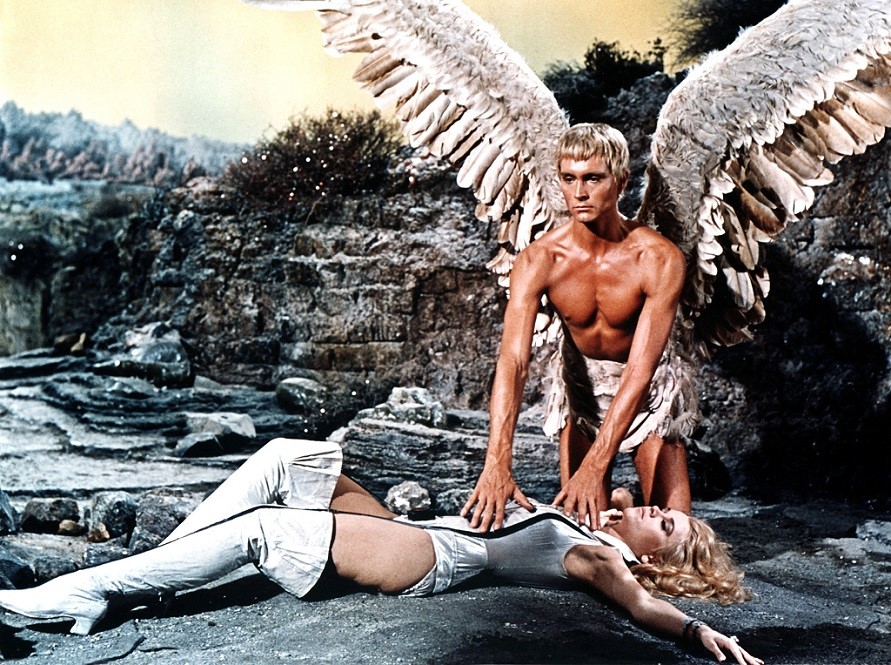
The movie is filled with incredible visuals and definitely focuses on free love and the sexual liberation of the protagonist. Barbarella isn’t a very deep or well-developed character and this film uses her to titillate viewers. However, it does result in an unintentionally positive upside. Few studio titles during this era focused on a woman’s sexual pleasure and wouldn’t treat lovemaking as a recreational activity. While the Barbarella character is initially innocent about physical love (in the future, pills are used during mating rituals), the character eventually is empowered and uses her libido to foil the plans of one of the central villains. Yes, it’s certainly presented in a campy and sensationalistic manner, but it does present something of a step forward.
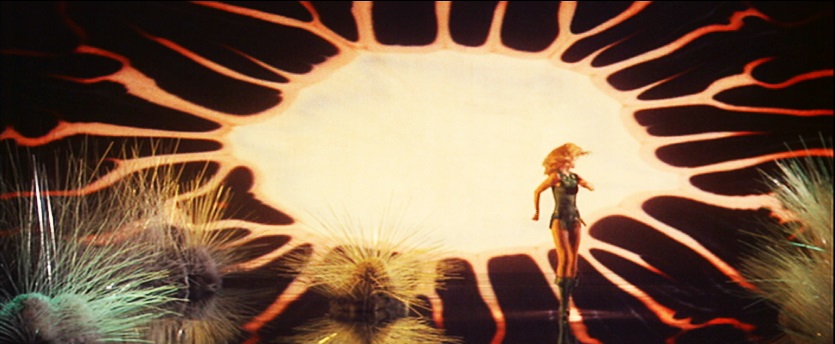
Admittedly, one can see why the picture had difficulty finding an audience. For a major studio picture, it has a distinctly European feel. It’s also an oddly paced film and any attempt at futurist spy action is squandered. Yet, every so often something striking or memorable occurs. This includes the opening scene involving the character undressing from a spacesuit in zero gravity, as well as a chilling bit in which Barbarella is attacked by iron-teethed dolls, and a trip into a dream chamber of the Great Tyrant. It’s best viewed as a 60s cinematic “trip” without the use of drugs, helped by the talented cast and charismatic lead.
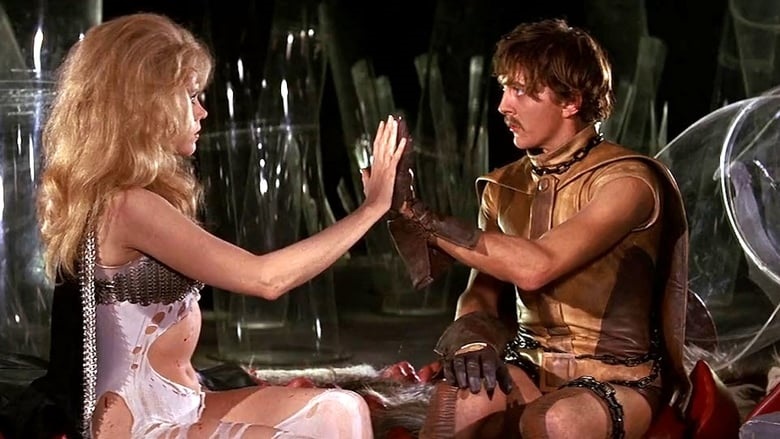
The extras, as you might imagine, are very interesting. There is an appreciation of the movie from critic Glenn Kenny, who details the film’s issues and elaborates on elements that were ahead of its time. The same goes for a film historian commentary from Tim Lucas. It gives a lot of background information about the production and how the production came together. The young Fonda had received the script and tossed it aside, but Vadim (her husband at the time) saw it as a big opportunity for both of them and convinced her to do it with him as director. There are also interesting stories about casting (David Hemmings actually replaced another actor who filmed a few scenes in the movie before being let go). The speaker also notes that Vadim’s lack of experience shooting action hurt the finished product and was likely what resulted in the focus on quirkier aspects of the story.
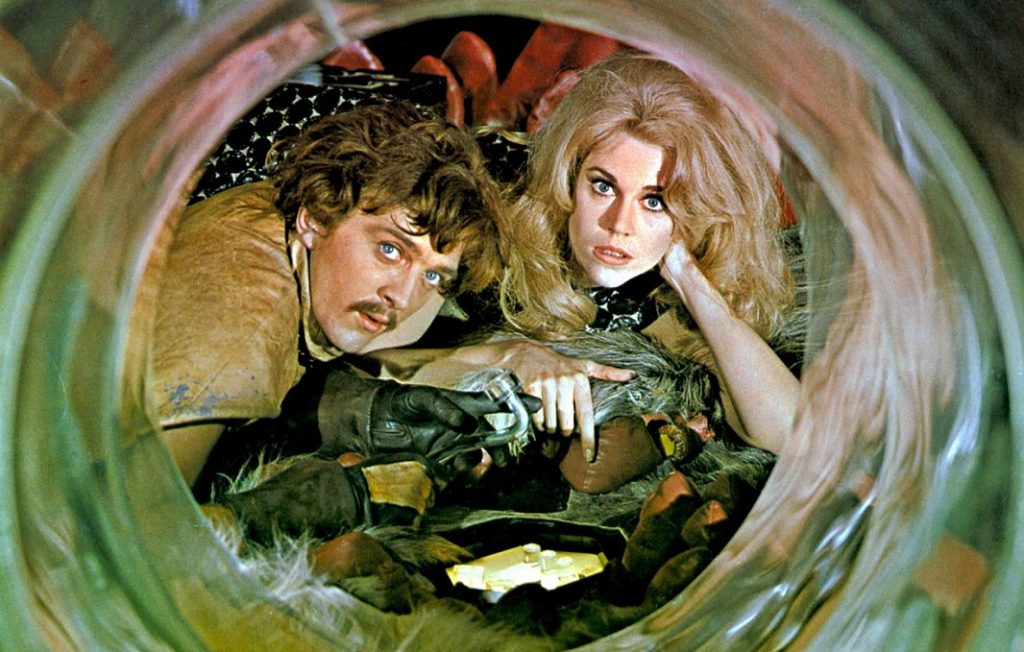
There is also a nearly two-hour discussion between Lucas and comic book artist/film professor Steve Bissette on the title. It’s long, but there is plenty of interesting debate and information about the movie, its problematic elements, as well as plusses (like the vibrant imagery on display). They also discuss the comic book in great detail and the differences between it and the final product. The title’s legacy is also discussed and the pair note how it influenced and perhaps ended up resulting in the creation or comic book characters like Vampirella and the female lead in the French comic Valerian and Laureline (which was adapted into the 2017 feature Valerian and the City of a Thousand Planets), as well as flicks like Galaxina and future sci-fi characters like Ripley from the Alien series. It’s an enlightening listen.
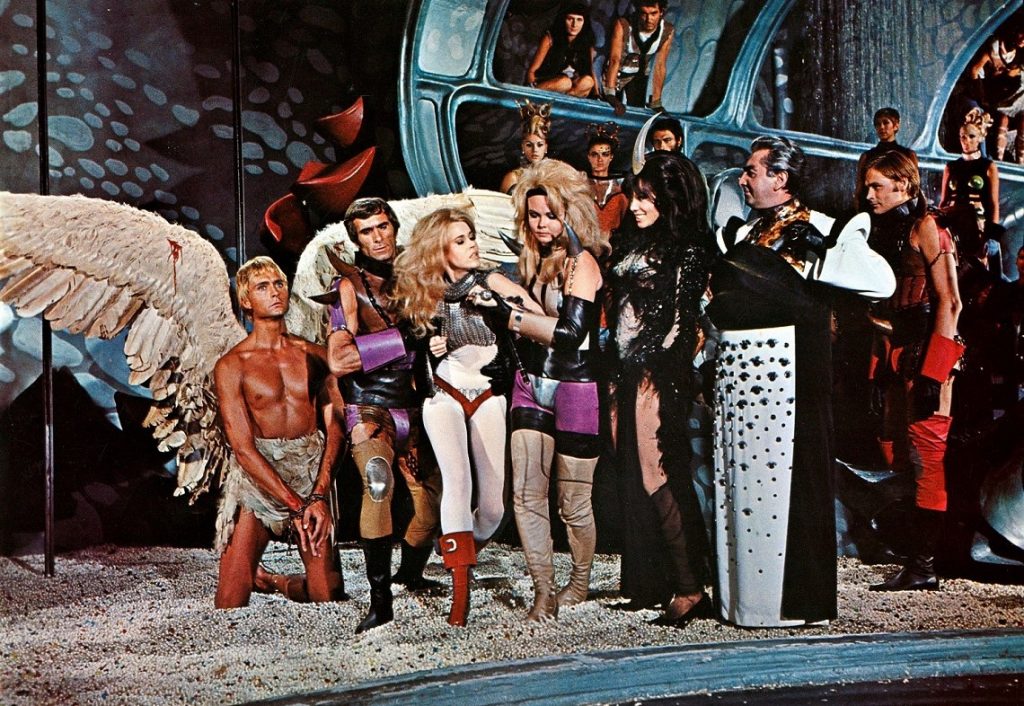
Additionally, the set includes an interview with fashion scholar Elizabeth Castaldo, who dissects the creation of the unique costumes used in the picture. She notes how the film, since it was set so far in the future, needed to use strange and unique materials in order to create an otherworldly feel. There’s also an interview with camera operator Roberto Girometti, who notes his memories working with the cast and crew. Actor/director Ricky Tognazzi discusses the life and work of his father and Barbarella star Ugo Tognazzi, while body-double Fabio Tessi talks about his career and experience as a body double for John Philip Law in the movie. All of the men note how stunning a presence Fonda was, but that she was friendly and kind to all of them.
There’s also a video essay on producer Dino De Laurentiis. It notes that after a series of successful projects in his homeland, he was intent on creating a big studio project and finding his way into Hollywood. This big one didn’t work out, but he eventually succeeded with titles like Serpico, Death Wish, Three Days of the Condor, Flash Gordon, Ragtime, several Stephen King adaptations throughout the 1980s, as well las Dune, Manhunter, Blue Velvet, Army of Darkness, Breakdown and Hannibal among many others.
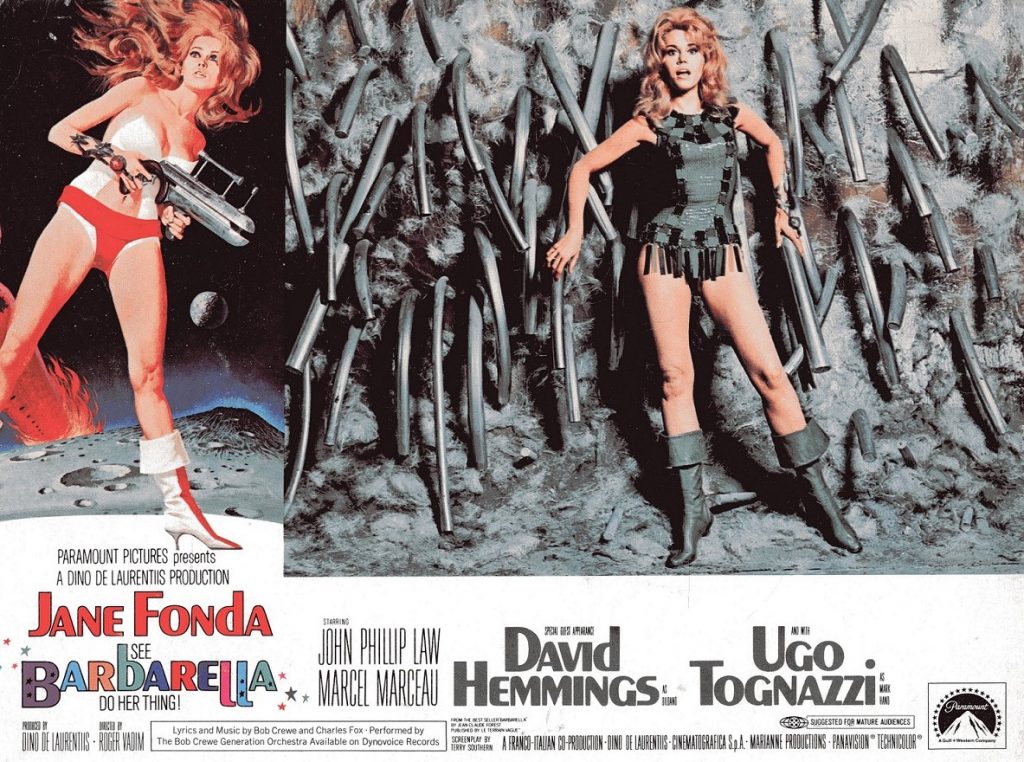
And the set comes with a great deal of publicity materials, including a trailer, US TV and radio spots and an image gallery. And there’s also an alternate opening and closing credit sequence included. For those interested, you’ll also get an illustrated collector’s booklet with writing on the film, a double-sided fold-out poster with original and newly created art for the title, in addition to six double-sided postcards with images from the movie.
Barbarella isn’t a masterpiece, but it is quite unlike anything seen up to that point from a major Hollywood. It also has a distinctive look, an appealing lead and plenty of eccentric elements that do make it a memorable film. This new release from Arrow Video is equally striking, with incredible image quality and hours of bonus material that help paint a clearer picture of how this oddity ended up on the big screen. For science-fiction fans, this set is definitely worth picking up.


